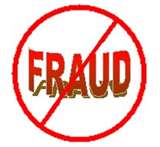Medical Billing Fraud

Medical billing fraud occurs in practices a lot more often than you think. This article addresses fraud as it relates to insurance billing and also embezzlement. In many cases, providers do things that are insurance related fraud without even knowing it. The procedures outlined here can help you to prevent it.
Your stated charges should be the same for all patients.
A medical practice should charge the same rate for all patients. It is common to see a practice charge different amounts for the same procedure based on insurance allowed amounts. This is done to avoid having to post insurance write-offs on patient accounts.
This practice should be avoided. Every patient must be charged the same amount for the same procedure. If you wish to give a discount due to financial hardship, the patient should complete a financial hardship form. The point is to treat all patients the same.
Charge patient copayments.
It is medical billing fraud to waive patient copayments. To do so violates your insurance contracts and gives your practice an unfair advantage over others. Follow the same procedure indicated above if you wish to give a hardship discount.
Bill insurance carriers for only procedures you have done and have chart notes to support it.
You might wonder why I bother to include this kind of medical billing fraud because it is so obvious. However, even providers that don't deliberately commit medical billing fraud are concerned about correct coding especially as it relates to E&M procedures.
I find that most providers undercode office visits to avoid being accused of medical billing fraud. You can refer to the coding section of this site for more information on E&M coding. The most important thing for a provider to do is document the visit sufficiently and bill using the code the documentation supports. Most good EHR software helps you make this determination.
Balance your bank deposits to your medical billing software.
You can avoid the risk of embezzlement by following this simple procedure. Most medical billing software can generate a deposit list. Enter your payments for the day, print out your deposit report, and match your deposit to it. Making a daily deposit is a good idea because it is much easier to reconcile errors. Even if you can't make it to the bank each day, prepare the deposit daily, seal the envelope and you're done.
This procedure not only protects the providers, but is also helpful in protecting office staff. Many providers are guilty of taking cash out of the drawer when they are short and then forgetting to tell anyone. Reconciling the deposits every day keeps everything straight and avoids problems.
When you follow this protocol, your bookkeeper will be able to balance the cash receipts from the accounting program to the medical billing software reports.
If possible, delegate making bank deposits to someone other than the medical biller.
When it comes to money, it is generally good accounting practice to have a separation of function in your office. It protects the financial health of the practice and protects the employees as well. Generally, the staff member entering the charges and payments into the medical billing system should not be making the bank deposits.
This can be difficult to accomplish in a very small practice but there are some options. While you cannot always eliminate the problem totally, some providers elect to have a lock box service with the bank. Checks are mailed to the lock box instead of the office. The deposits are handled at the bank and copies of the checks and deposit slip are mailed to the practice.
Over the counter checks and cash can still be reconciled, verified daily, and signed off by the provider or office manager. The point is, procedures can be put in place to overcome the possibility of medical billing fraud.
Make it a habit to look at practice analysis reports for any significant changes in income or write-offs that cannot be explained.
Embezzlement can occur when no one is minding the store. The provider or office manager should review production reports each month. This not only helps to eliminate medical billing fraud
but also makes your medical biller more accountable.
Implementation of these procedures will help reduce your risk of medical billing fraud.


